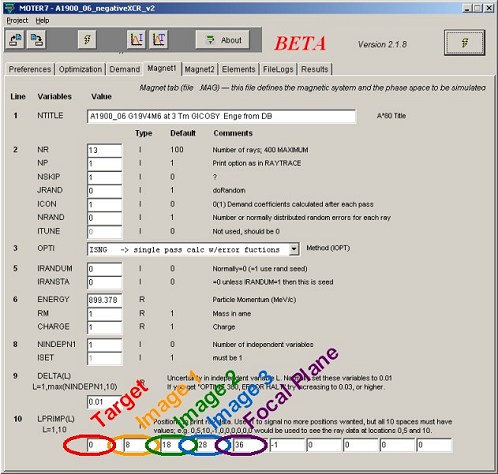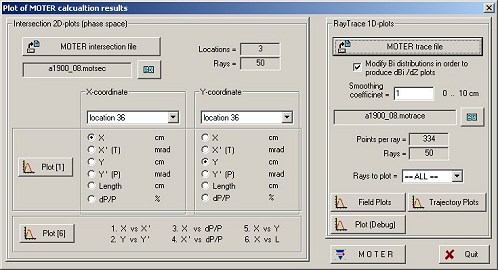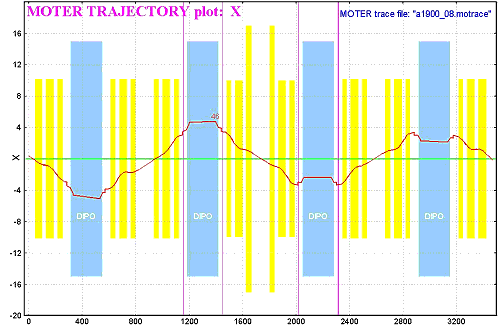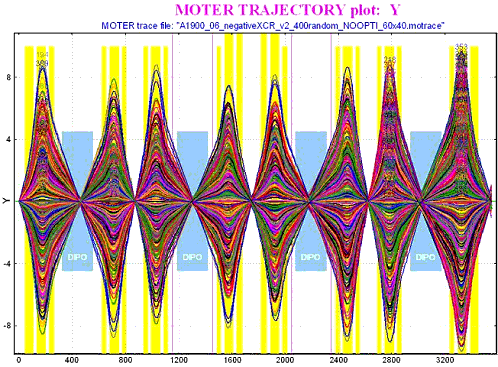|
MOTER is a raytracing-type program for magnetic optic system design. It is based on the program RAYTRACE, and includes the capability of optimizing system parameters.
The MOTER code has been rewritten from FORTRAN to C++ and
transported to MS Windows operating system at 2007 by Oleg B. Tarasova,
and Sergey V. Lobastovb. This new development was
initialized and supported by Prof. Brad Sherrilla and Prof. Dave J. Morrisseya.
Nowadays the MOTER code is still under development by Oleg Tarasov and Marc Hausmanna. This
work was supported by DOE #DE-FG02-06ER41413,
NSF #PHY-06-06007 grants.
The MOTER code can be installed free through the LISE++ installation package.
[a] - NSCL/MSU,USA
[b] - FLNR/JINR, Dubna, Russia
MOTER status (August 1, 2008)
by H.A.Thiessen
and Morris M.Klein
Los Alamos Scientific Laboratory, Los Alamos, New Mexico 87545
Kenneth G.Boyer
University of Texas, Austin, Texas 78712
MOTER is a raytracing program intended for analysis and optimization of systems of magnetic elements. Several features are included in MOTER which are not available in other codes. Among these are Monte Carlo simulation of the beam phase space, a sophisticated definition of the performance including the possibility of computer correction of aberrations based on measurements of the trajectory of each event, the automatic optimization of any parameter of the magnet system, the possibility of the use of field maps for dipoles, quadrupoles, and multipoles, and the availability of several new element types including an ExB separator, an r.f. accelerating gap, a wedge degrader, and various slits and scatterers. To the greatestpossible extent, MOTER makes use of the definition of parameters identical of program RAYTRACE. In order to minimize the pitfalls of problem setup, it is suggested that the MOTER user first study his problem with the standard codes TRANSPORT, TURTLE, and RAYTRACE, in that order.
The history of the evolution of MOTER is useful for understanding some of the details of the coding. Starting with the 1969 version of RAYTRACE, written by S.Kowalski and H.Enge of MIT, the following sequence of additions and modifications
occurred.
|
Second generation of MOTER in action |

Fig.1. The MOTER code interface. The "Magnet1" tabulation sheet is shown.

Fig.2. LISE++ dialog constructed to plot MOTER calculation results.

Fig.3. The horizontal component of A1900 ray tracing by MOTER and plotted by LISE++.

Fig.4. The vertical component of A1900 ray tracing by MOTER and plotted by LISE++.
|